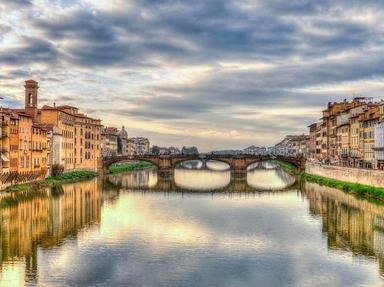Quiz Answer Key and Fun Facts
1. After a night-time ascent of the mighty Ben Nevis in Scotland, we decide to cool off with an early morning dip in the beautiful Red Tarn which sits near the base of the mountain. As a tarn, what can we say about this body of water?
2. Suitably satisfied with our time at the tarn, we begin our trek through England towards the European mainland, and what better way to get there than along the river that carves its way through London. Rising in Gloucestershire and draining into the North Sea at Essex, which river is this?
3. Having travelled south and crossed the English Channel, we make our way upriver through France, passing through the capital city as we do so. Some may call us mad, but which river are we in now?
4. Set in a beautiful mountainous backdrop is our next destination, Lake Lugano. Lake Lugano lies on the Swiss-Italian border and is a popular tourist attraction. Between which two larger lakes is Lake Lugano located?
5. Heading south to central Italy, we reach the visually stunning Lake Trasimeno, noted for the abundance of castles that surrounds it. In which Italian region is this body of water?
6. Lanolin, check. Pilsner, check. Map to the Czech Republic, check. Time to make a splash. Which "wild" river are we in now, the longest in this country?
7. We now make our way to Lake Vrana, but unfortunately, we've been accidentally split up. It turns out there are two Lake Vranas in this country. Where must we be now?
8. We now arrive in the Balkan Peninsula and to Lake Skadar. This serene lake lies on the border of two countries on this peninsula. Which two countries are these?
9. Slightly worried because of its mythological connections, we head to Greece for a swim in the Acheron River. Into which sea does this "hellish" river empty?
10. Russia is home to many of Europe's largest lakes. Among these is our final aquatic destination - an artificial lake formed by a hydroelectric dam on the Volga River and which shares its name with a famous Russian author. Which lake is this?
Source: Author
eburge
This quiz was reviewed by FunTrivia editor
Pagiedamon before going online.
Any errors found in FunTrivia content are routinely corrected through our feedback system.

